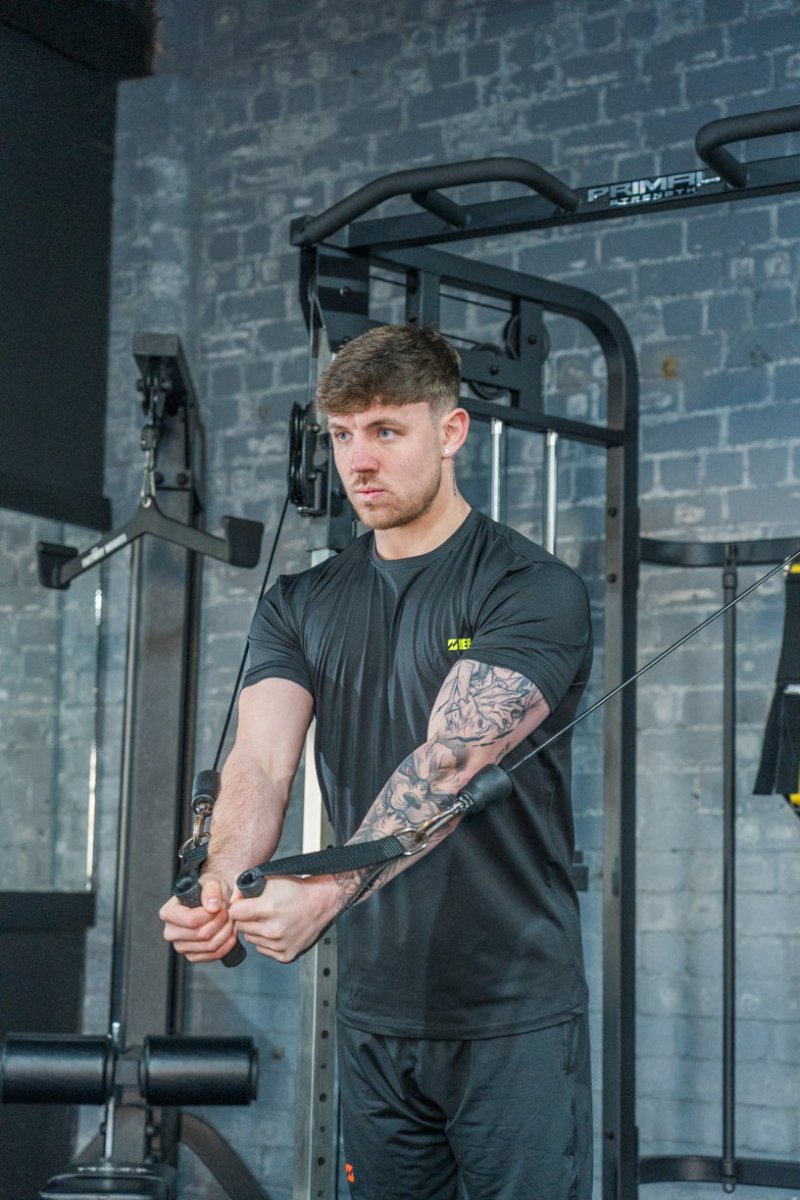What To Wear To The Gym Female Guide [2025 Guide]
Understanding What to Wear to the Gym: Female Guide
If you’re about to take your training seriously, knowing what to wear to the gym as a female goes far beyond style. The right clothing isn’t just about looking sharp for your sessions, but maximising performance, boosting comfort, and helping you stay safe. In this guide, we’ll break down the essentials of gym wear for women, tackling what works for different workouts, common mistakes to avoid, and insider tips to make every session count.
Why Gym Wear Matters for Women
Choosing the right outfit can give you a real edge. It’s a science-backed fact that what you wear influences not just confidence, but also how efficiently you move, how much you sweat, and how you recover. According to the NHS Physical Activity Guidelines, one of the main barriers to regular exercise is discomfort, often caused by poor clothing choices. When you eliminate distractions from ill-fitting or unsuitable wear, you can focus on smashing your fitness goals.
Here’s why getting your gym kit right matters:
- Comfort: The right clothing helps prevent chafing, overheating, or feeling restricted—key for longer or more intense workouts.
- Performance: Garments designed for physical activity can aid freedom of movement, letting your body work at its best.
- Hygiene: Proper gym wear can wick away sweat and cut down on bacteria build-up, which makes for a fresher session.
- Durability: When kit is made for training, it handles regular washing and hard use, so you get more from your investment.
Feeling good in your gym wear isn’t vanity—it’s weaponising confidence. For more training motivation, read more on the REP blog.
Essential Features: What To Look For In Gym Outfits
Materials and Fit: Foundations of Great Gym Wear
For women wondering what to wear to the gym, female-specific fit and material make a real difference. Prioritise fabrics that are breathable, lightweight, and move with you. Cotton, though comfy, tends to hold on to sweat, which can leave you cold or uncomfortable. Synthetic blends, which you’ll find in most athletic clothing, boost moisture-wicking and fast drying.
Ideal gym wear should be:
- Breathable: Ventilated panels or mesh are ideal for airflow during sweat-heavy sessions.
- Stretchy: 4-way stretch fabrics allow for squats, lunges, or any move you throw at them.
- Supportive: Especially for high-impact workouts, the right fit is vital for both support and confidence.
According to the British Nutrition Foundation, sportswear that fits well can help regulate body temperature and reduce the risk of injury. In short: ignore the trends; prioritise performance.
Layering and Adaptability
Layering is your best friend, especially if you train early morning or move between different spaces like studio classes and weights areas. Thin base layers keep sweat in check, while outer layers can be removed as you warm up. When you think about what to wear to the gym female athletes typically select adaptable pieces they can put on or take off as their session changes.
- Start with a sweat-wicking base layer for temperature control
- Light outer layers for chilly warm-ups or cool downs
- Reliable footwear, chosen based on activity, for stability
Keep in mind: comfort equals consistency. Wearing the right gym gear means you’re more likely to turn up and work hard. Discover more ways to boost your fitness in our guide to regular physical activity.
What to Wear to the Gym Female: Matching Kit to Activity
Strength Training and Weight Lifting
If your session centres around weights or resistance machines, flexibility and support are your top priorities. Loose or baggy kit can catch on equipment, while overly restrictive clothing can mess with your range of motion. Women doing strength training should pick items that feel snug but not tight, letting you move easily while holding up to repeated squats, deadlifts, or presses.
- Choose: Stretchy, squat-proof leggings and secure tops for unrestricted movement.
- Avoid: Overly thin or see-through materials, as these can distract during deep ranges of movement.
- Tip: Ankles and wrists should be free of loose fabric to avoid snagging or getting in the way of barbells.
This approach helps you maintain focus and push for progress on every lift.
Cardio Sessions: Treadmills, Bikes, and Circuits
Endurance training sessions, whether on treadmills or bikes, mean heat and sweat. The best choice for what to wear to the gym female runners and spinners is streamlined, breathable kit that evaporates sweat quickly.
- Light, close-fitting tops reduce drag and sweat pooling.
- Moisture-wicking shorts or leggings keep energy high for longer.
- Sports bras with enhanced support are crucial for minimising discomfort during dynamic action.
Go for pieces that stay put and let you move, mile after mile. To learn why cardiovascular fitness matters, check out expert advice on the NHS Live Well portal.
Group Training and Functional Fitness
If you’re into HIIT classes or circuits, look for kit that transitions between moves. Breathability is essential. Materials that dry quickly help you keep up when things get sweaty. Your clothing should allow your body to flex and bend, whether you’re lunging or jumping.
- Opt for cap sleeves or sleeveless designs for full arm mobility.
- High-waist leggings can add core stability, especially for dynamic movements.
- Avoid excessive zips or hardware that could cause irritation during burpees or floor work.
Remember, it’s all about comfort and versatility. For more on fitness routines that match your style, read more on the REP blog.
Common Mistakes to Avoid With Gym Wear
Choosing Poor Fit or Unsuitable Materials
One of the biggest mistakes seen in the gym is women wearing kit that doesn’t fit their training style or body type. Ill-fitting clothing can distract or hamper movement, while unsuitable materials can trap sweat or cause overheating. Avoid heavy cotton, jeans, or casual wear, as these will lead to discomfort and hamper your progress.
- Not testing outfits: Always do a quick stretch test—squat or reach overhead to check that nothing rides up or restricts.
- Over-layering: Too many layers can cause you to overheat quickly, leading to fatigue.
- Ignoring support: For any kind of movement, proper support from your sports bra and shoes is non-negotiable.
Whether you’re new to fitness or a seasoned gym-goer, double check that what you’re wearing is fit for purpose—your body and your session will thank you.
Forgetting About Hygiene and Gym Etiquette
Good gym kit also means good hygiene. Wearing the same outfit multiple sessions in a row, or leaving sweaty kit in your bag encourages bacteria that cause odour and may lead to skin irritation. Wash everything after each use, and bring a small towel to wipe down equipment after you’re done—next level respect for your fellow gym users.
- Rotate between two or more outfits for regular training.
- Use moisture-wicking socks to protect against athlete’s foot or blisters.
- Keep gym shoes clean for both hygiene and longevity.
Looking after your kit is as important as looking after your body. Discover more gym etiquette tips on the REP blog.
Expert Tips: Choosing Confidence-Boosting Gym Outfits
Balance, Coverage, and Confidence
Ultimately, knowing what to wear to the gym female lifters and runners comes down to what makes you feel confident and powerful. You want gym kit that balances support and coverage, so you never have to adjust or feel self-conscious mid-session. Choosing darker colours or subtle patterns can sometimes boost confidence if you’re unsure, as they tend to be less revealing.
- Layering lets you adjust quickly between warm-ups and work sets.
- If you’re self-conscious, go for higher-waist options or relaxed tops until you gain confidence.
- Pockets or storage for keys or cards help keep distractions down when you’re focused.
Zero in on clothes that let you train your way—no matter your body type or goals. For more support on feeling confident in any gym setting, read more on the REP blog.
Looking After Your Gym Wear
Proper care keeps your kit ready session after session. Avoid fabric softeners with technical fabrics; they can break down fibres and reduce moisture-wicking ability. Wash with similar colours and always hang-dry where possible—this extends the life and performance of workout fabrics. For details on the best ways to extend your gym kit’s lifespan, read more on the REP blog.
Conclusion: Nailing What to Wear to the Gym as a Female
The best gym wear for women is functional, comfortable, and gives you confidence—no matter your fitness level or goals. Always prioritise fit, flexible fabrics, and support that matches your activity. Pay attention to hygiene and care for your kit so it always supports you. Above all, wear what gives you the confidence to step up, crush your sessions, and work towards your goals every time you train.
For more actionable advice on training, confidence, and all things gym life, read more on the REP blog.

